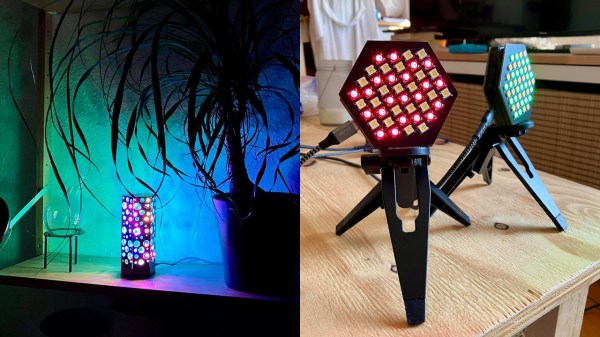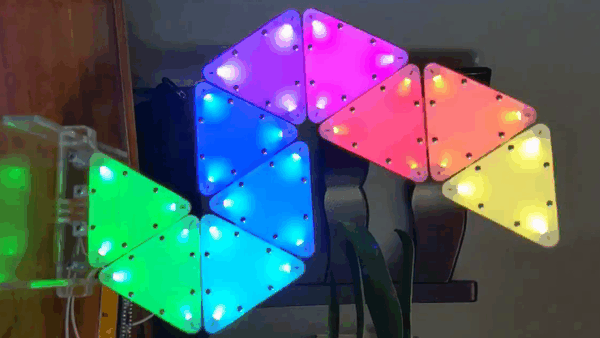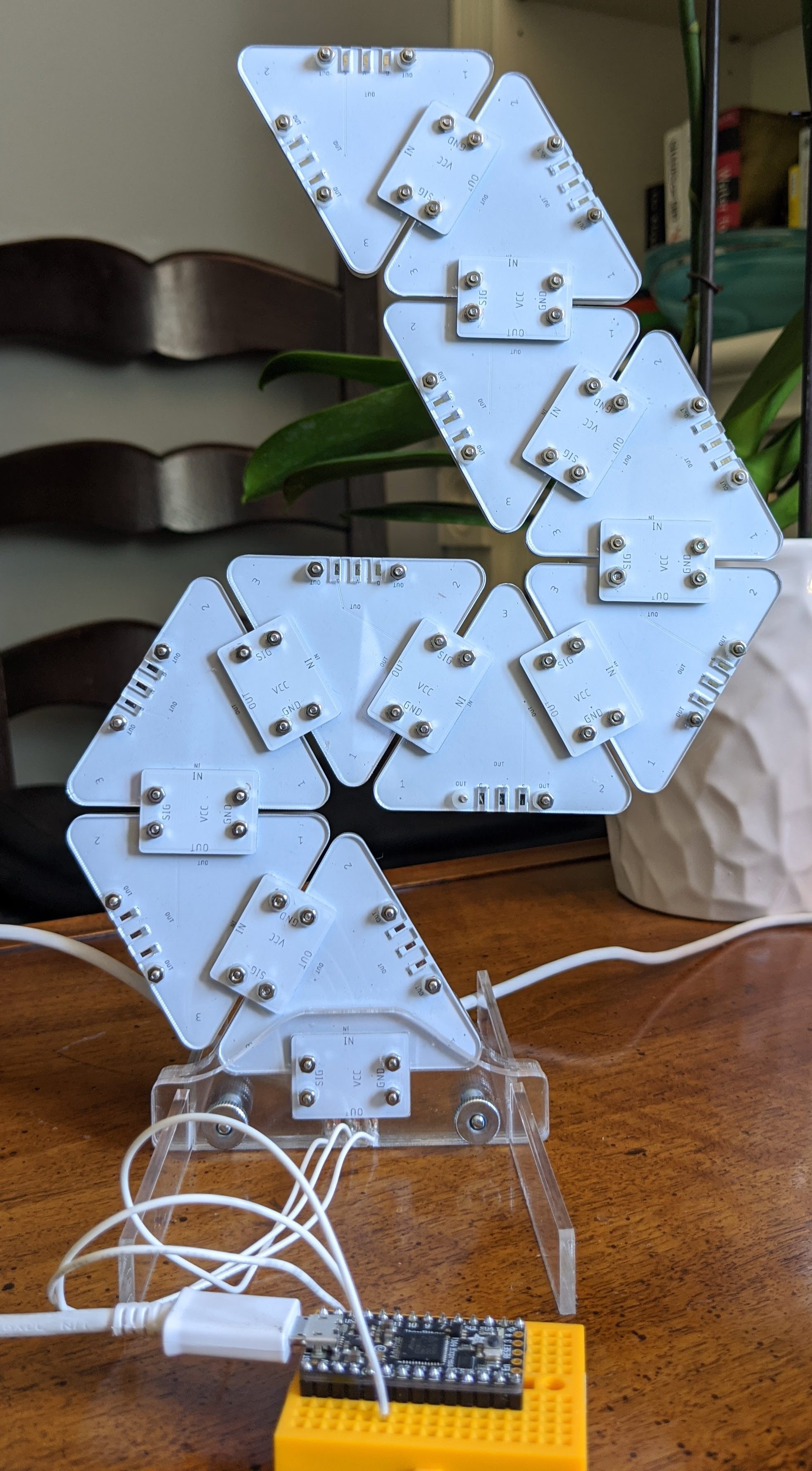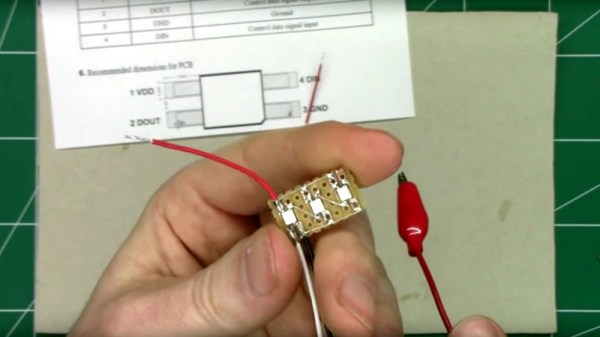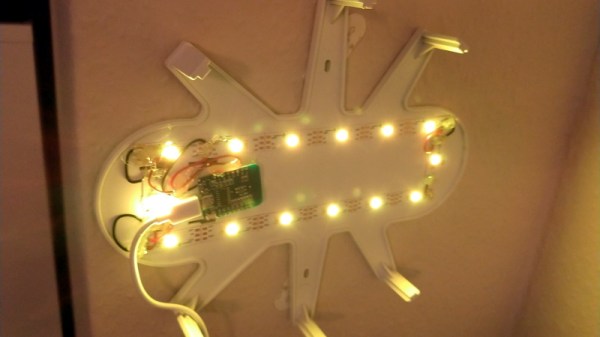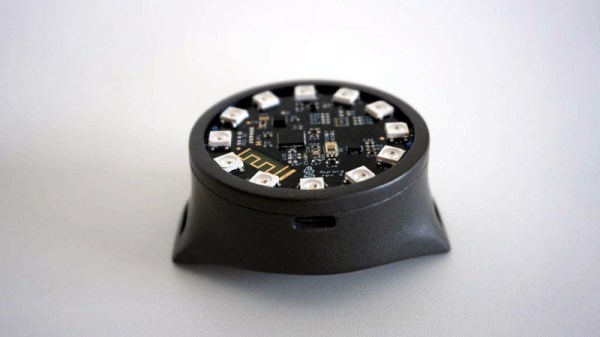Building with LEDs is a hacker pastime like no other – what’s more, if you keep playing with LED tech out there, you’re bound to build something elegant and noteworthy. For today’s fix of beautiful LED devices, take a look at the two LÄMP creations of [Jana Marie], both LED projects building upon one another. It’s not just your regular RGB LEDs – she adds a healthy mix of white and yellow LEDs, making for colors way more natural-looking and pleasant to the eye!
The first one is the LAEMP-Panel, a two-PCB sandwich, combining into a spot light you can use for any purpose where some extra LED would really shine – be it photography, accent, or mood lighting. All of these LEDs are individually controlled and from the SK6812 family, half of them YYW and half RGB variation. As for the base board, the controller is an ESP32, paired to an E75 ZigBee module – this spot light is built to be part of your home’s ZigBee network. If you look at the base board’s KiCad files, you will also notice six-pin headers on five edges – and they’re there for a reason.
The sister project to this one, the LAEMP-Prism, is a remarkable hexagonal lamp built upon the LAEMP-Panel’s PCB base, but in a desk-friendly form-factor. Six extra side panels with a generous amount of circular cutouts give you a total of 291 LEDs, mix of yellow, white and RGB as before – we got to say, from the pictures we found, it looks like a gorgeous thing to have in your house!
Such is a story of building a spotlight and a desk lamp, both using the same hardware base to accomplish quite different purposes. As is [Jana-Marie]’s tradition, these two lamps are fully open-source, complete with instructions on assembling them – everything is ready for you if you’d like to build one of your own, whichever version it may be! When it comes to lamp-building projects that excel at looks, one can’t forget the two other lamps we’ve seen a few years ago – one built with fiber optics, and another in the shape of the Moon.

